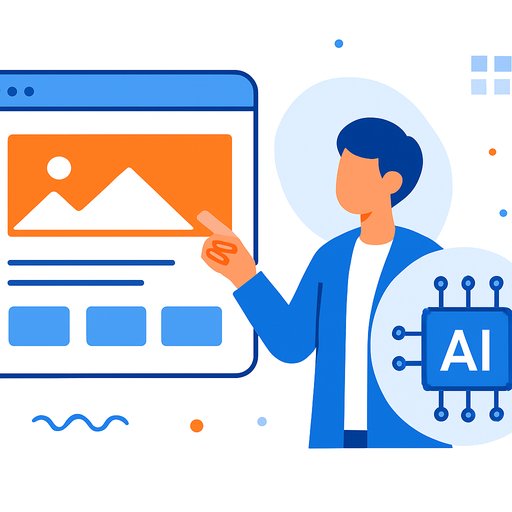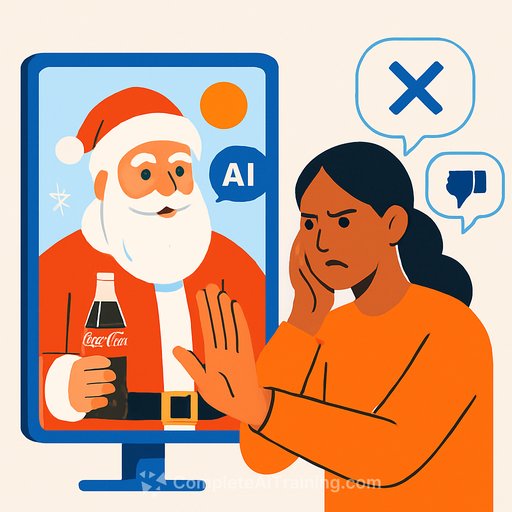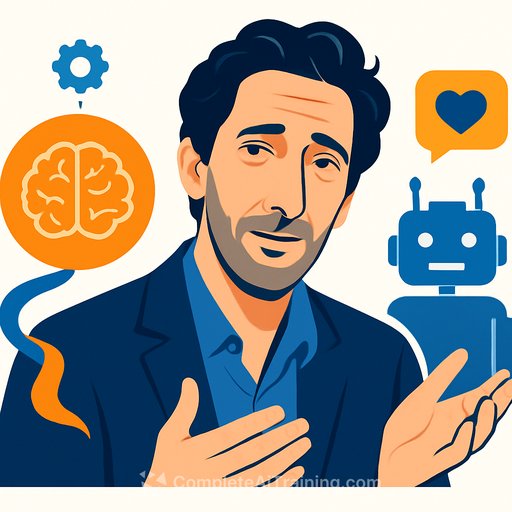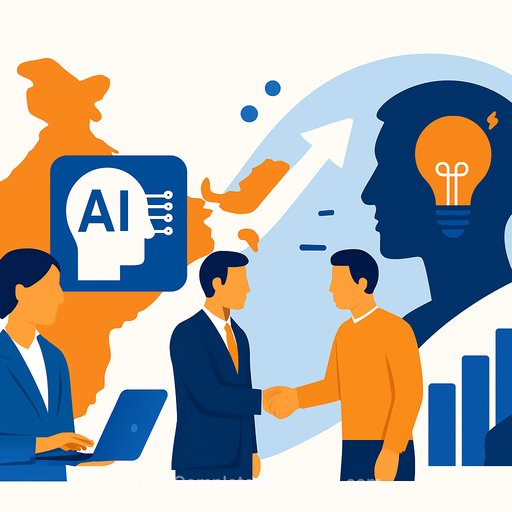AI Web Design: A Practical Edge for Creatives
Everywhere you look, creative work is getting a lift from smart tools - web design included. AI web design helps you ship faster, test more ideas, and keep quality tight without spending all night on repetitive edits.
The market for AI-powered website builders is expected to cross $31 billion by 2033. Source: Global AI-Powered Website Building Market. Access is growing, costs are dropping, and the tools are easier than you think. Nearly 93% of web designers already use AI, and 81% say it boosts productivity.
AI won't replace you. It removes friction, handles the routine, and gives you space to do the creative work only you can do.
What Is AI Web Design?
AI web design uses artificial intelligence to plan, build, and improve websites without heavy manual coding. Think layout creation, content suggestions, image generation, and A/B testing handled in the background.
- Create a website layout in minutes.
- Suggest color palettes and fonts based on brand cues.
- Test versions of a page to see what converts better.
It reduces repetitive tasks and accelerates feedback loops, so you don't start from zero every time.
The Evolution of Web Design with AI
We moved from fixed templates to drag-and-drop tools. That made building easier, but personalization was limited.
Now, AI website builders suggest layouts, content, and UX patterns based on your audience and goals. Machine learning studies behavior and adapts designs for clarity and conversions - even adjusting navigation to match what people actually click.
Result: websites that are smarter, more user-focused, and easier to maintain.
How Creative Automation Works
Creative automation removes the slog. An AI web design generator can spin up auto-layouts, ready-to-use themes, and quick prototypes in a few clicks. You get a consistent starting point that you can refine.
These tools also handle the grind - resizing images, generating variations, and adjusting palettes. Less manual work, fewer errors, more time for design decisions.
Real-World Example: Shopify's AI Store Builder
Shopify's AI Store Builder (launched May 2025) can generate up to three complete store layouts from a few keywords - images and copy included.
Shopify also offers Shopify Magic, a suite that helps with theme personalization, image editing, and content generation. For creators, that means setup time drops and polish goes up.
Benefits for Businesses and Designers
- Faster workflows: Let AI handle repetitive tasks like resizing, spacing, and layout tweaks. You focus on concept and craft.
- Consistent systems: Keep fonts, colors, and components uniform across pages without hunting for mismatches.
- Personalization that performs: Use behavior data to adapt content and layout in real time. More relevance, better conversions.
Snapshot: Webflow's AI Assistant
Webflow's AI assistant suggests layouts, generates copy, and optimizes experiences inside the editor. It's powered by machine learning so teams can move faster without context-switching. See: Webflow AI.
Bottom line: you get speed, consistency, and smarter UX - with minimal friction.
Challenges and Limitations
Generic outputs: AI builders can feel same-y. Complex features or custom flows often require manual design and development. Some platforms have limited flexibility, SEO trade-offs, or design bias.
Human creativity is still critical: AI doesn't grasp brand story, emotion, or cultural nuance. That's your job - and it's the difference between "fine" and memorable.
Ethics and copyright: Training data can blur lines. Keep an eye on originality, licensing, and bias. Human oversight keeps work unique and safe.
Future Trends Creatives Should Watch
- AI as a co-pilot: You steer; AI speeds up layout suggestions, imagery, and UI tweaks. Designers shift from starting from scratch to curating and refining.
- Deeper personalization: Layouts, content, and visuals adapt to user behavior in real time.
- Smarter generators: Cleaner code, better SEO, and performance-aware suggestions. Tools like Webflow, Framer, and Squarespace keep raising the bar. New players like Div-idy promise full front-end code, design, and assets from plain language prompts.
How Businesses Can Put AI Web Design to Work
1) Start with Free AI Website Builders
- Wix ADI: Builds a site after a short questionnaire.
- Framer AI: Turns text prompts into designed pages.
- Squarespace AI: Automates layouts and improves content suggestions.
Great for quick validation and low-cost launches.
2) Scale with AI Design Tools
- Uizard: Converts sketches into wireframes.
- Figma AI: Speeds up layouts and variations.
- Adobe Firefly: Generates graphics and design elements fast.
Use them to automate prototyping, variations, and production work without losing quality.
3) Blend AI with Human Taste
Let AI do the heavy lifting on layouts, content outlines, and component systems. Then bring your taste, strategy, and story to make it resonate.
If you want a curated place to sharpen these skills and explore tools, check out Complete AI Training - Latest AI Courses.
Frequently Asked Questions
1) What is AI web design, and how does it work?
AI web design automates tasks like layout creation, color suggestions, content generation, and personalization. It analyzes behavior and design patterns to deliver clean, user-friendly sites quickly.
2) How is it different from traditional design?
Traditional workflows rely on manual coding and starting from scratch. AI speeds up repetitive work, offers instant templates and smart suggestions, and streamlines testing.
3) Can AI replace designers?
No. AI is an assistant. Designers bring brand, story, taste, and context - the parts that make a site feel human and worth visiting.
4) What are the business benefits?
Faster delivery, lower costs, consistent systems, and personalized experiences that convert. Ideal for startups, eCommerce, and teams that iterate often.
5) What trends should I watch?
AI co-pilots in the workflow, real-time personalization, better code quality from generators, and text-to-site tools that build functional front ends from prompts.
Final Thoughts
AI is your creative assistant, not your replacement. Use it to reduce busywork, test more ideas, and keep a clean system, then spend your energy on the story, the feel, and the details that set your site apart.
The best results come from balance. Automate the repetitive parts, keep humans in the loop for taste and strategy, and ship work that's fast, original, and effective. If you're leveling up your workflow, explore AI courses by job to build the exact skills you need.
Your membership also unlocks:






